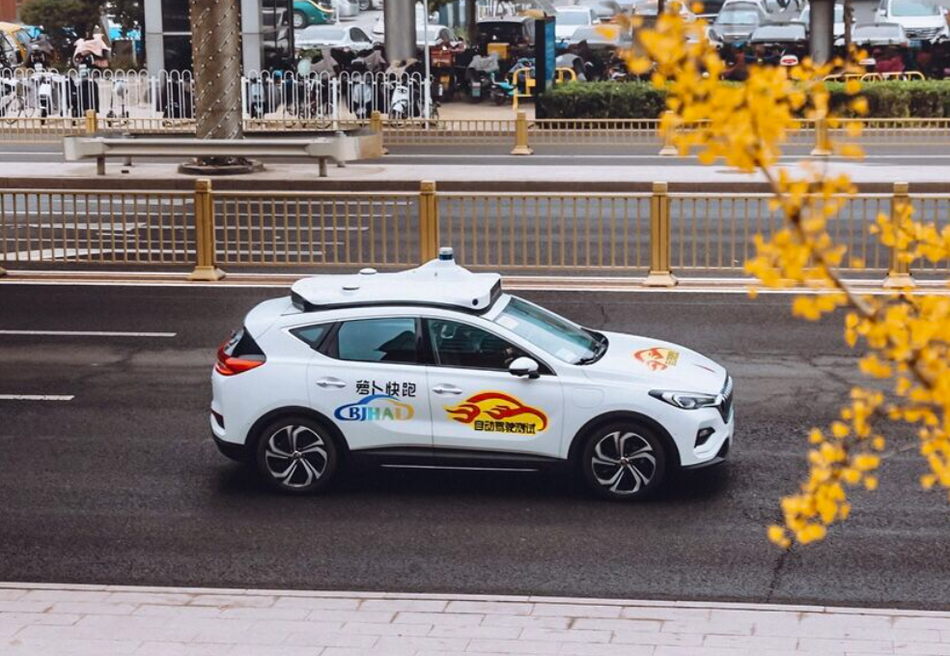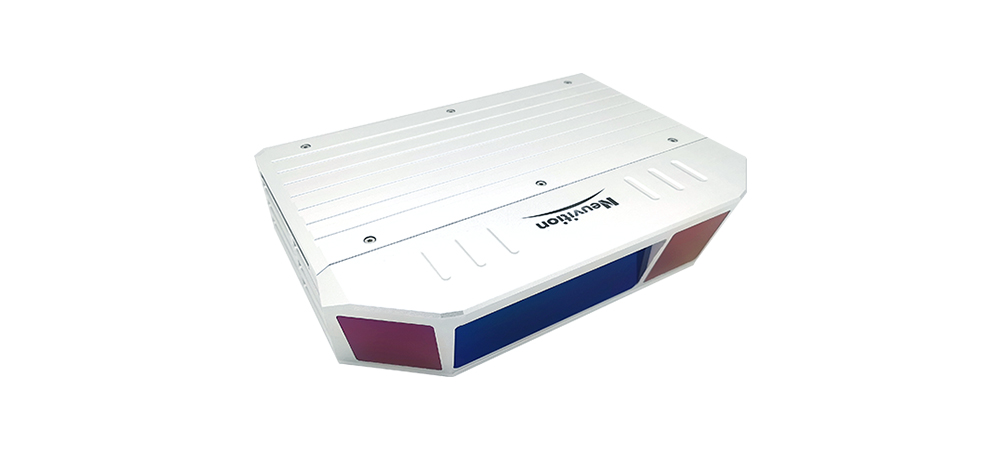Robotaxi Starts Working in Beijing
Author: Release time:2021-12-08 02:30:15
Recently, Baidu received the approval for commercial operation of its Apollo Go autonomous car service (known as Luobo Kuaipao in China) in Beijing, bringing dozens of the so-called “robotaxis” to the streets. It is authorized to provide paid service in China’s first-ever demonstration zone for commercial autonomous driving. Baidu Apollo Go robotaxi marks a further step in its accelerating progress towards large-scale commercial operation with the service’s first-ever commercial deployment on open roads.

Baidu’s self-driving hailing service can be used via the Apollo Go app (Luobo Kuaipao) with currently 67 cars in operation from 7:00 am to 10:00 pm. The robotaxi only carries two passengers at a time and operates in Yizhuang area. Prices for the robotaxi service are similar to premium ride-hailing services, which could be booked via the Didi app, charging just over two yuan ($0.30) for a 5.9-kilometre (3.66-mile) journey. The self-driving taxis still have a human security officer in case any sudden intervention is needed, but the vehicle drives itself. And it is expected that regulation will allow operation without security staff within the next 1 or 2 years.

The appearance of robotaxi is not much different from normal online car-hailing and taxis, except that it has a variety of sensor equipment on its head, mainly including sensors such as LiDAR, radar, and camera. The sensor devices especially LiDAR are expensive to build. In the early days, one piece of imported LiDAR was 800,000 yuan. This year, thanks to the efforts of China’s domestic LiDAR companies, the price has dropped to a minimum of 10,000 yuan. This time, Luobo Kuaipao is the fourth-generation car developed by Baidu, equipped with a 40-line LiDAR, as well as 12 cameras, 5 millimeter-wave radars, and 12 ultrasonic radars. A rough estimate is that the cost of a whole car is more than 1 million.
Another “Luobo” robotaxi on the test road in Jiading is Baidu’s fourth-generation Robotaxi—Hongqi EV. The roof is equipped with a Hesai 40-line LiDAR, integrated with 9 cameras, plus millimeter-wave radar and ultrasonic radar, and the car can achieve L4 level automatic driving capability. Every few seconds, the LiDAR and camera on the roof scan the surrounding environment. The static objects are mainly recognized by radar scanning, while LiDAR and cameras are mainly responsible for dynamic scene recognition.
China’s first pilot program for commercial autonomous driving travel services
Robotaxi in China is entering the next stage of broader commercial deployment. Beijing launched China’s first pilot program for commercial autonomous driving travel services, which allows Baidu and Pony.ai to charge passengers for self-driving taxis. Both robotaxi companies can now charge fees for their self-driving taxis in Beijing’s suburban Yizhuang district, after having received the commercial permit from the Beijing High-level Automated Driving Demonstration Area (BJHAD).
With the implementation of this pilot in Beijing, the commercialization of autonomous driving in China has finally completed its first independent operation. In the 5G era, Robotaxi, as the carrier of human public travel, is the most important element in the Internet of Everything. It carries the ultimate travel plan for humans. The commercial operation of self-driving cars in China marks the end of the autonomous driving testing phase and the beginning of broader market development focusing on the testing of market-based pricing mechanisms.
What comes next?
Baidu aims to expand its Apollo Go operations into 65 cities across China by 2025 and 100 cities by 2030 (it is expected that Shanghai is next). At present, Baidu Apollo has already made achievements of Robotaxi, unmanned trucks, unmanned buses in mines and parks.
Robotaxi autonomous driving will also create huge opportunities for the automotive sensor industry and also accelerate the development of supporting technologies such as cameras (including infrared and event-based detection), radar, LiDAR, and connectivity and remote operations. Among the three key sensors, we see the adoption of higher resolution cameras and higher frame rates, advances in radar performance and power, and significant cost reductions in LiDAR.
MEMS+1550nm laser is currently the only mature technical solution that can pass the vehicle-level certification, with lower cost and higher accuracy. Neuvition LiDAR has been focusing on the solid-state MEMS+1550nm technology and is one of the most advanced commercially vehicle LiDARs available in the market with many parameters ahead of the competition.

Neuvition’s solid-state HD vehicle LiDAR uses MEMS micro-galvanometer plus 1550nm laser technology, which improves reliability but cuts cost. Titan M1-Pro LiDAR has a high resolution of 480 lines, a FOV of 120 °, and an effective detection distance of 200 meters. The super performance and significant improvement on safety for autonomous driving make Titan M1-Pro the best solid-state vehicle LiDAR for self-driving cars.
If autonomous driving technology is going to be implemented on a large scale, in addition to the algorithms and software technology, it is also inseparable from hardware quality control and product control from cars or sensors, especially the LiDAR technology to secure every self-driving trip.